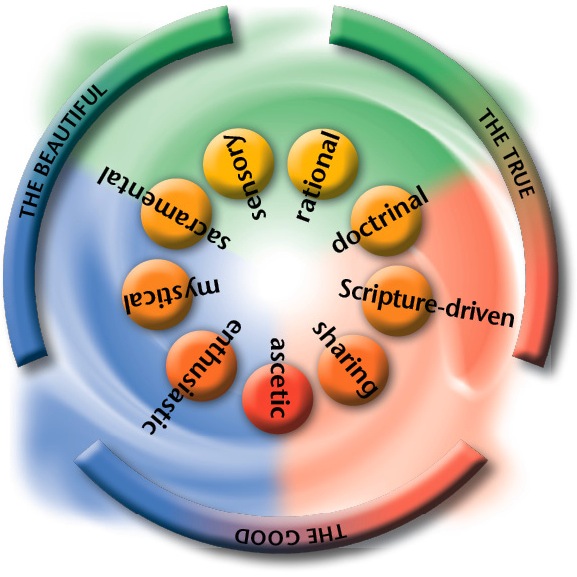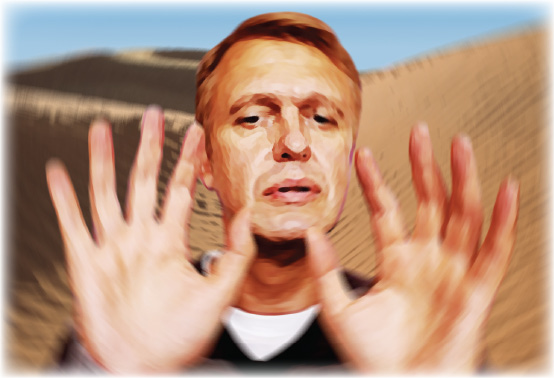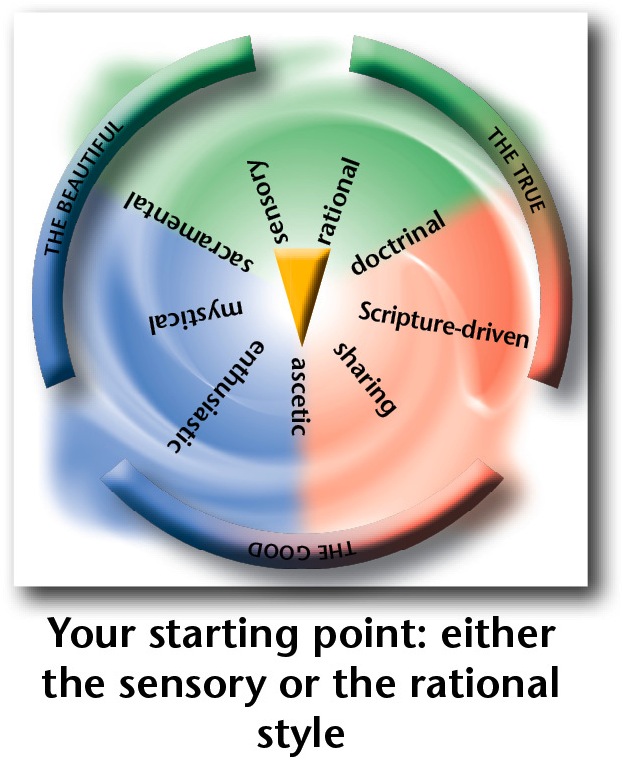What fascinates me about my ascetic mentor Henrik
H
Henrik expresses his spirituality extremely differently than I do, as my most highly developed style is the sacramental style, followed by the sensory style. In addition, he represents his values with relentless conviction. He‘s definitely not a man of questionable compromises. Though I can cheerfully drink one glass of wine in his presence, when I lift the second glass I notice him looking very seriously into my eyes, and if I were to lift a third glass, not only would he feel extremely uncomfortable, but I probably would as well. Therefore, I try to avoid such a situation. He radiates a certain rigor, but nothing legalistic. And because he is not legalistic, I am willing to open up and share about my own problem areas.
 Graphical representation of the ascetic style: It is essential to understand the positioning of this style within the Trinitarian Compass. Christians with an ascetic style should take into special consideration the two opposite styles (sensory and rational) as these throw light on the dark side of the ascetic style.
Graphical representation of the ascetic style: It is essential to understand the positioning of this style within the Trinitarian Compass. Christians with an ascetic style should take into special consideration the two opposite styles (sensory and rational) as these throw light on the dark side of the ascetic style.
On the one hand, the ascetic style belongs to the red style family; on the other hand, to the ethical style family. Depending on its leaning toward one of its two neighbor styles, it can manifest itself in a more sharing (red) or more enthusiastic variety (blue). For Christians with an ascetic style, it is most natural to express their spirituality through a demonstration of their independence from material and worldly concerns. The strength of this style is its focus on a sacrificial life; its peril is the tendency to withdraw from the world (escapism).
 Christians with an ascetic style experience God most strongly when they are far away from any worldly distractions. Externals such as symbols and rites are more of a hindrance than a help in their approach to God, which is focused on living a holy life.
Christians with an ascetic style experience God most strongly when they are far away from any worldly distractions. Externals such as symbols and rites are more of a hindrance than a help in their approach to God, which is focused on living a holy life.
To those approaching the ascetic style from the opposite side
 It is easy to understand why Christians whose spirituality is grounded in the green zone (either in the sensory or rational style), have difficulty with the ascetic style. Everything that is important for your spirituality—the arts and sciences, sensory perception, symbols, etc.—is viewed with skepticism by representatives of the ascetic style. Why should you get involved with a spirituality that has such a critical view of the very things through which you experience God so concretely? How could that enrich your faith, wouldn’t it just pull the carpet right out from under your feet? It would be like taking away the sacraments from a sacramental believer, the Bible from a Scripture-driven believer, or signs and wonders from an enthusiastic believer. And, without a doubt, there are varieties of asceticism (see box on page 124) that view anything green negatively.
It is easy to understand why Christians whose spirituality is grounded in the green zone (either in the sensory or rational style), have difficulty with the ascetic style. Everything that is important for your spirituality—the arts and sciences, sensory perception, symbols, etc.—is viewed with skepticism by representatives of the ascetic style. Why should you get involved with a spirituality that has such a critical view of the very things through which you experience God so concretely? How could that enrich your faith, wouldn’t it just pull the carpet right out from under your feet? It would be like taking away the sacraments from a sacramental believer, the Bible from a Scripture-driven believer, or signs and wonders from an enthusiastic believer. And, without a doubt, there are varieties of asceticism (see box on page 124) that view anything green negatively.
However, if your spirituality is green, the goal of the process is not to give up your strengths. Your ability to experience God through your sensory perception (sensory style) or through your thinking (rational style), is something that is of great value. It is not unfair to describe green spirituality as a “secular” spirituality, or even better, as a “creation spirituality.” However, in spite of all of these strengths, your approach has dark sides, too. Dietrich Bonhoeffer, an advocate of both the sensory and the rational component of spirituality, didn‘t stop speaking about “love for the world.” That same Bonhoeffer, however, could also state the following: “There is a love for the world that is hostility to God” (James 4:4). This, explained Bonhoeffer, is a love based on the world in and of itself and not on God‘s love for the world.
This is exactly the point at which representatives of a sensory style can learn from Christians with an ascetic style. You certainly shouldn‘t take over the “anti-green” view that can be found in many ascetic groups, but training in acts of self-discipline—of which the prime example would be fasting—can help you develop more independence from material things. Yes, it can even help you enjoy (and I have deliberately opted for an entirely unascetic term) God‘s creation in new and deeper ways.
The benefit for Christians with a rational style is similar. How easily can they forget about the sacrificial dimension of the Christian faith. Sure, in the area of asceticism you can find a lot of unthinking, self-imposed, unnecessary, and even harmful suffering. But there is also authentic suffering for Christ‘s sake. If you are trained in ascetic practices, you will be better equipped to lead a life according to God‘s standards: Expressing faith not just with your mind (green), but also with your will (red) and your heart (blue).
Further topics in the above chapter of the full version of the book
Henrik, my mentor for the ascetic style - No appreciation of externals - No need for symbols - Opposite to green - The core of the ascetic style: Removing external distractions - The two wings of the ascetic style - The strengths of the ascetic style - The perils of the ascetic style

